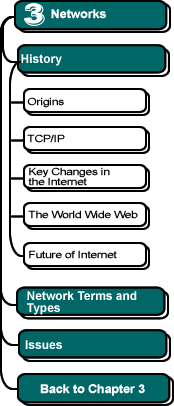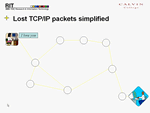

|
TCP - Transmission Control Protocol
TCP is principally responsible for making sure that the information sent is received.
 TCP
divides transmissions into packets—aka datagrams
(a play on the word telegram). Each packet contains
TCP
divides transmissions into packets—aka datagrams
(a play on the word telegram). Each packet contains
- a "To:" address,
- a "From:" address,
- the ID number of the transmission of which it is a part,
- its place or location within that transmission.
Think of a datagram as something like the image to the right. (This isn't how a datagram actually looks, of course.)
 At
the other end of the transmission, TCP also is at work reconstructing
the message by reassembling the packets. Click the image to the right
illustrating the basic principle behind the sending of packets.
At
the other end of the transmission, TCP also is at work reconstructing
the message by reassembling the packets. Click the image to the right
illustrating the basic principle behind the sending of packets.
 Each
packet may take a different path to the destination, depending upon which
way the router sends it; thus, some packets of a message
might encounter network congestion or outages and fail to reach the destination
while the other packets succeed in making it to the destination. Thus,
TCP also handles the resending of copies of packets that
were lost or damaged in transit. Click the image to the left to see an
animation illustrating the basic concepts of packet loss.
Each
packet may take a different path to the destination, depending upon which
way the router sends it; thus, some packets of a message
might encounter network congestion or outages and fail to reach the destination
while the other packets succeed in making it to the destination. Thus,
TCP also handles the resending of copies of packets that
were lost or damaged in transit. Click the image to the left to see an
animation illustrating the basic concepts of packet loss.
In this way, TCP ultimately creates a kind of connection between two hosts, enabling them to send transmissions to each other.
![]()
![]()
This chapter was written by Jeff Nyhoff and Joel Adams. Copy editing by
Nancy Zylstra
©2005 Calvin University (formerly Calvin College), All Rights Reserved
If you encounter technical errors, contact computing@calvin.edu.